A Trailblazing "Residential" Gallery, David Alhadeff's Hollywood Home Is an Ever-Evolving Canvas
The Future Perfect founder talks the beginnings of his intimate, three-location contemporary design project, "living with art" in his LA house, and the forever-becoming essence of his ambitious talent incubator platform
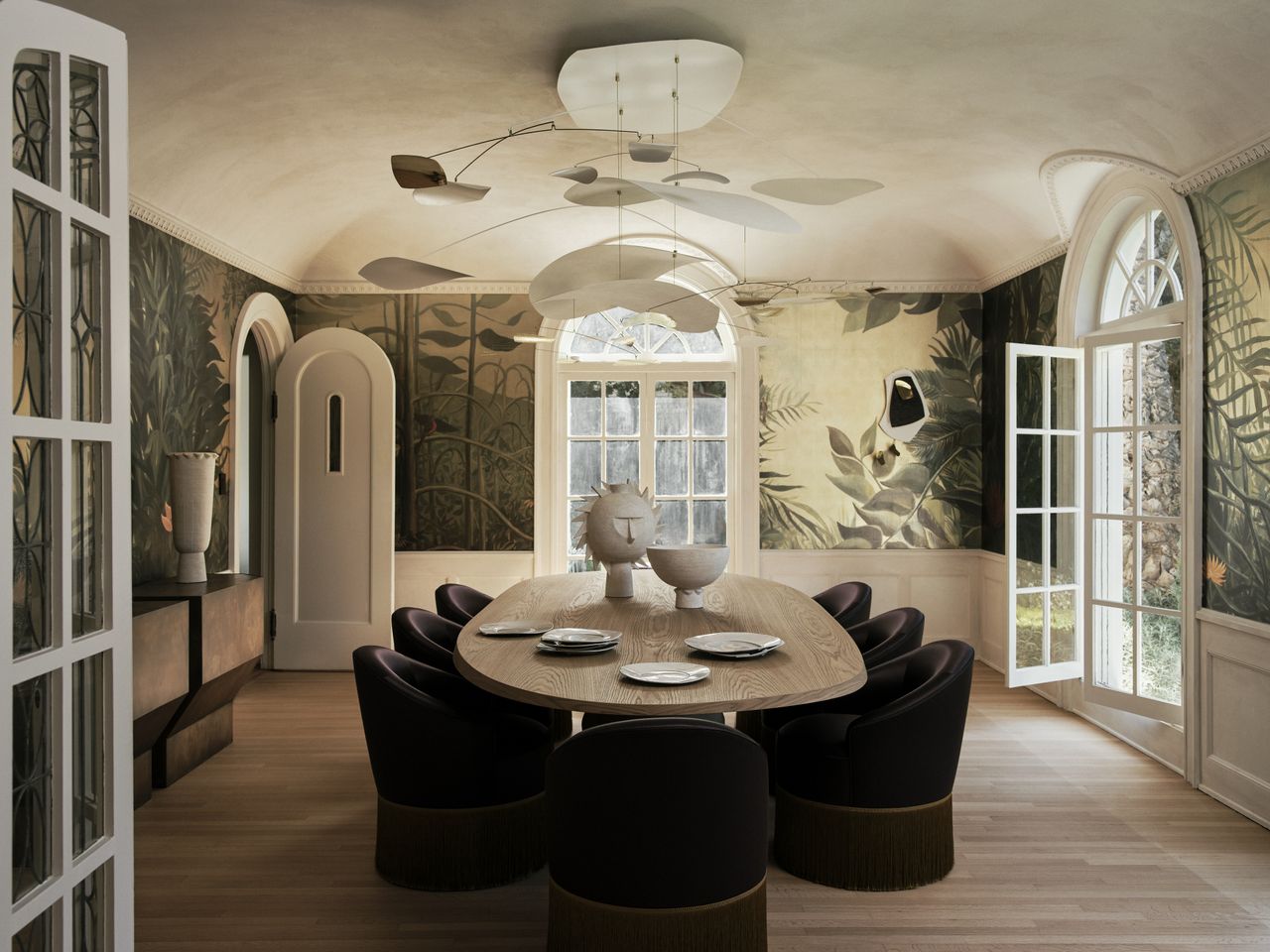

Seattle-born David Alhadeff didn't start The Future Perfect in the hope of becoming the next pioneer of American design, but on a whim to "work with something tangible".
From a bittersweet start in the only-just-surfacing tech industry of the 1990s, where he had founded a moderately successful teen apparel e-commerce platform he "was fortunate enough" to sell to a company that later went bankrupt, the gallerist owner turned to his long-time love of design knowing "that was the space I wanted to be in," he tells me in conversation over Zoom. Alhadeff was aware of the Eurocentric essence of the interior scene, and wanted to change that. Looking beyond the ever-spread appreciation of US mid-century modern furniture classics, he recognized an opportunity in "the local community of makers and artists who weren't being given representation".
Captivated by the work of these emerging designers, in 2003 Alhadeff launched what grew into one of the world's leading galleries in its field, The Future Perfect, with one mission: championing the "American contemporary voices who felt most interesting to me". Located in Williamsburg, Brooklyn, the original location began as a collectible furniture and objects store, gradually morphing into a cutting-edge curatorial concept as it gained momentum. In retrospect, "doing something contemporary was a truly outlandish idea," admits the founder, referring to how, at the time, vintage design dominated the scene. "Had I known what I was doing, I wouldn't have done it, but like with any good form of entrepreneurship, a little naivete can be a real strength."
The Future Perfect: From Store to Gallery, and From Gallery to Home

A glazed ceramic table by Floris Wubben, stools by Ian Collins, and Chris Wolston's sconces are part of the vibrant décor of The Goldwyn House
Despite receiving prompt editorial recognition, Alhadeff's passion-driven, instinctual approach to building the business took a while to break into the market. Still, it certainly bore fruit in the long term. 21 years fast forward, today The Future Perfect is the defining voice in new experimental design, spotlighting "studio-created works and one-of-a-kind and limited edition pieces" between homeware, lighting, textiles, and wall coverings, including expansive installations that are, at once, extraordinarily crafted, inspirational, and playfully imaginative. From American artist Lindsey Adelman's dreamy light sculptures and Dutch designer Piet Hein Eek's patchwork-like, sustainable furniture explorations to Providence-born Chris Wolston's amusingly spirited art and functional design creations, the platform has acted as a springboard for the career of some of today's boldest creative talents, and is continually looking for new protégés.
“Had I known what I was doing, I wouldn't have done it, but a little naivete can be a real strength” — David Alhadeff
Since its inception, Alhadeff's brainchild has left the energetic Williamsburg to find its permanent New York home in the St Luke's Townhouse. Sited in the affluent West Village, "it is the prototypical Italianate row house where the beginning credits for The Cosby Show were filmed," he reveals. Originally built in 1901, it was renovated by award-winning English architect David Chipperfield in 2003. The Future Perfect has also expanded to San Francisco, where it set up shop in 2013 in a gallery that, located in the Pacific Heights district, was later revamped to include an apartment-like space that favors an immersive, multi-room experience. But it was its arrival in Los Angeles, in January 2017, that proved game-changing for the evolution of Alhadeff's project.
The Birth of Casa Perfect and the Journey to The Goldwyn House

Chris Wolston's whimsical ceiling light serves as the centerpiece of another one of the rooms of The Goldwyn House
This coincided with the debut of his Casa Perfect experiment, which, kicked off at a 1957, David Hyun-designed modernist house in the Hollywood Hills that year, saw Alhadeff combine family and work life into the same — and his first — "residential" gallery. Not knowing which district of LA would be most beneficial to the platform, "I thought, 'I'll rent a nice house, live in it, and use it as a space to showcase our program,'" he recalls. Not only was the success of this new format "instantaneous", both socially and commercially, but "we were also able to break out of the constraints of the traditional gallery model, entering a much more intimate way of sharing our work with the audience." From there, Casa Perfect migrated to Elvis Presley's former Beverly Hills home in the lavish Trousdale Estates neighborhood in 2018, making it a mid-century modern furniture lover's dream, and to a Raul F. Garduno-designed, quintessentially Californian residence nearby two years later. Meanwhile, Alhadeff had exported the concept to his five-story New York St Luke's Townhouse, and included elements of it in The Future Perfect's San Francisco outpost, too.
After years of renting, "it was time for us to buy property in LA," Alhadeff explains. The choice fell on The Goldwyn House, a 1916, sun-filled residence bearing the signature of architect Arthur S. Heineman, once home to famed movie producer Samuel Goldwyn, where The Future Perfect founder now lives with his husband and son. Rising on the slopes of the Hollywood Hills, the property became "the canvas" onto which the gallery's boundary-breaking offerings unfold, particularly in the form of ambitious, architectural site-specific works. "Showing our clients how you can live with art and design in a very immersive way is something we couldn't have done from a rented space," explains Alhadeff. "Putting down some roots became the dream, and the move created a whole new story."
Embracing the Home As "An Ever-Transforming Canvas"






Just like his New York home, whose tree-lined, red-brick façade and sophisticatedly sumptuous, loft apartment style ambience embody "the ultimate fantasy of the New York experience", The Goldwyn House is a LA utopia, towering over a sweeping estate punctuated by gardens and a scenic swimming pool. "Close your eyes and imagine an old-style Hollywood mansion," Alhadeff tells me. "You got the picture?" While its beauty is undoubted, it's only a superficial part of this investment. To the modern interior design disruptor, what can be achieved within it, is what makes it all worth it. "To have the chance to work side-by-side with a designer to have them apply their craft to something that's unique for you and your home is a beautiful thing," he says, pointing to the one-off, spectacular pieces that inhabit the house. In it, adds Alhadeff, lies "a very special opportunity to inspire others to do the same."
From an eccentric, bronze-murals-and-tiles powder room elevated by Chris Wolston's quirky artistry and an Olivia Cognet-designed, glazed outdoor firepit evoking the view of "a volcano in full eruption" to stunningly upholstered, bespoke soft seating by Christophe Delcourt and an Art Deco design-inspired rug collection courtesy of Christopher Farr, The Goldwyn House's interiors couldn't be more eclectic. Bringing this extraordinary selection of artworks and homeware closer together is their creators' desire to move beyond the limits of what has, so far, been possible in design. An example? "Dutch artist Floris Wubben has just got a new kiln to start making full large-scale dining tables in glazed ceramic," Alhadeff tells me. "The first version is an 83 by 43-inch model, which will be followed by an even larger version, created in two parts and 140 inches long."



The other element uniting all of The Goldwyn House's art and design additions is their state of transience. Here, like in the other residences of The Future Perfect, "everything is constantly evolving and changing," adds the founder. "Emptying out rooms, bringing in new rugs, and redoing the paint and the wallpaper is something people don't tend to do very often, but mostly when they move. At the Goldwyn House, each space is ever-transforming, which is fun as it allows me to always try new things out." Also drawn towards painting, sculpture, and ceramics, with the latter as his favorite artform since "that's where art and design meet", Alhadeff's home collection expands beyond functional design to embrace other creative expressions. The only criterion behind his buys? "Whether or not I want to live with them," he tells me. "If I was a 'real' collector, I'd be sticking every piece I own in a storage facility, so that nothing would happen to them. When you choose to live with art, you risk potential harm to it, but in return, you get the benefit of experiencing amazing work that's inspiring and that, in my case, complements the design creations present in the house."
“What I am after is work that feels vulnerable” — David Alhadeff
It is a privilege that, with The Future Perfect, Alhadeff has extended to those who visit any of his three appointment-only locations. Here, visitors are invited to get lost into the rotating curation of emerging and established artists and designers championed by the gallery as the next industry innovators across recurring solo and group presentations, exclusive collaborations, and fair appearances. Currently, the gallery is displaying the breadth of potential of its multi-generational roster with an impressive, two-part booth at Design Miami (through December 8). Coinciding with Art Basel Miami, this interdisciplinary showcase captures The Future Perfect's microcosm through floating textiles and chandeliers, fantastical objects, and fanciful, creature-like furniture crafted with care by over 20 creatives, including Sophie Lou Jacobsen, Chen Chen & Kai Williams, and Cody Hoyt, as well as Wolston, Wubben, Hein Eek, and Adelman themselves. The other half of the booth hosts New Delhi-based artist Vikram Goyal's first-ever US exhibition, celebrating the dramatic essence and scale of his bronze relief works, informed by ancient myths, Indian and Persian heritage, and a profound observation of nature.
Unlocking the Storytelling and Heritage Behind Contemporary Design

Installation view of The Future Perfect's booth at Design Miami, showcasing decorative and furniture works by Indian artist Vikram Goyal
Recently, The Future Perfect has also announced the winner of its inaugural namesake prize, awarded to Bahamian visual artist Anina Major, another one of the personalities part of its Design Miami extravaganza. Working with ceramics, she charges her pastel-hued, sculptural creations with references to the straw weaving practices of her homeland and echoes to its wider histories and culture. Major receives $20,000 in funding, along with mentorship and the opportunity to unveil a new body of work at the gallery's NYC outpost in 2025. For Alhadeff, who describes her practice as "deeply expressive", the institution of the award marks a new beginning for The Future Perfect. "We've just had our 20th anniversary and felt like tapping back into the ethos and values of the project," he says, mentioning craftsmanship and community as two of its pillars.
"We could have spent blank on a giant party, or choose to reinvest into our mission, doing something that can enhance the career of someone we admire, and we went for the latter," adds Alhadeff. Now more than ever, in a society trapped in multiple crises, "what we want from new works is the signature of the person behind them — something that makes our hearts sing." Built over long-term, personal relationships with the artists rather than on expectations of commercial success, the gallery's program is, ultimately, an attempt at discovering and platforming new voices who deserve to be heard. That's why, when it comes to their residential collections, "we take chances and show risk, because we are passionate about that," says the founder. "What I am after is work that feels vulnerable; when I think of contemporary design, I don't think of anything material or technological — I think of something real, of a designer's emotional experience, of their world."
With a whole new avant-garde of design trailblazers under one roof, The Goldwyn House catches a glimpse into their rapidly evolving universe before their genius spills into the world. Who knows what they will have created by the time their vision reaches us all?

Gilda Bruno is Livingetc's Lifestyle Editor. Before joining the team, she worked as an Editorial Assistant on the print edition of AnOther Magazine and as a freelance Sub-Editor on the Life & Arts desk of the Financial Times. Between 2020 and today, Gilda's arts and culture writing has appeared in a number of books and publications including Apartamento’s Liguria: Recipes & Wanderings Along the Italian Riviera, Sam Wright’s debut monograph The City of the Sun, The British Journal of Photography, DAZED, Document Journal, Elephant, The Face, Family Style, Foam, Il Giornale dell’Arte, HUCK, Hunger, i-D, PAPER, Re-Edition, VICE, Vogue Italia, and WePresent.
-
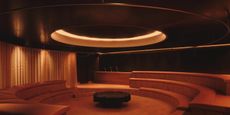 The Best Spas in the UK? These 10 Awe-Inspiring Destinations Where Wellness and Design Unite
The Best Spas in the UK? These 10 Awe-Inspiring Destinations Where Wellness and Design UniteLose yourself in the atmosphere of the best spas in England and beyond, each selected for their soothing and entrancing interiors
By Gilda Bruno Published
-
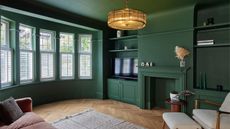 How to Clean Shutters Properly, Without It Feeling Like Your Home's Most Tedious Chore
How to Clean Shutters Properly, Without It Feeling Like Your Home's Most Tedious ChoreHere's an easy guide to cleaning your window shutters that won't have you dreading this regular task
By Seraphina Kyprios Published
-
 The Best Spas in the UK? These 10 Awe-Inspiring Destinations Where Wellness and Design Unite
The Best Spas in the UK? These 10 Awe-Inspiring Destinations Where Wellness and Design UniteLose yourself in the atmosphere of the best spas in England and beyond, each selected for their soothing and entrancing interiors
By Gilda Bruno Published
-
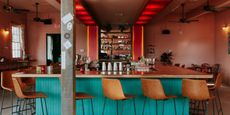 Never Mind the Super Bowl — The 30 Best Things to Do in New Orleans Right Now, as Recommended by Local Culture Insiders
Never Mind the Super Bowl — The 30 Best Things to Do in New Orleans Right Now, as Recommended by Local Culture InsidersMake your stay in the Big Easy count with our curated guide to its most spirited hotspots, from historic boutique hotels to charming eateries and bars
By Gilda Bruno Published
-
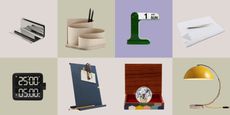 I'm a Modernist Design Geek — These 9 Desk Accessories Put an Unexpected Spin on Office Organization
I'm a Modernist Design Geek — These 9 Desk Accessories Put an Unexpected Spin on Office OrganizationTurn every working day into an inspiration session with our designer selection of cool desk accessories, blending artistry and functionality
By Gilda Bruno Published
-
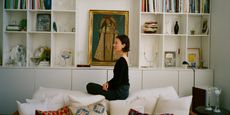 Hidden Trails — Glassware Disruptor Sophie Lou Jacobsen's Insider Guide to Exploring New York
Hidden Trails — Glassware Disruptor Sophie Lou Jacobsen's Insider Guide to Exploring New YorkThe rising designer shares her curated itinerary to the City That Never Sleeps
By Gilda Bruno Published
-
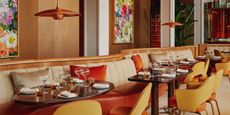 At This Three-in-One, Scenic New London Restaurant, Damien Hirst's Paintings Aren't the Only Masterpieces
At This Three-in-One, Scenic New London Restaurant, Damien Hirst's Paintings Aren't the Only MasterpiecesCelebrated chef Jean-Georges Vongerichten's experimentation playground at The Emory's abc kitchens brings a slice of New York glamour to the capital and food so beautifully crafted it competes with the artwork
By Gilda Bruno Published
-
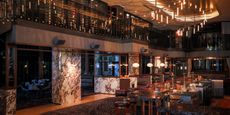 At This New Beverly Hills Members-Only Club, Old Hollywood Glamour Gets a High Tech-Meets-Gatsby Revamp
At This New Beverly Hills Members-Only Club, Old Hollywood Glamour Gets a High Tech-Meets-Gatsby RevampSleek brass detailing, timeless terrazzo floors, and marble-drenched dining rooms: meet Gravitas, the tech-aided haven for bon vivants who want it all
By Gilda Bruno Published
-
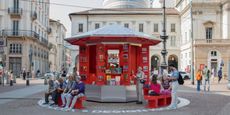 I Cover Art and Culture for a Living — These Are the 12 Most Inspiring Events to Tick Off Your Bucket List This Year
I Cover Art and Culture for a Living — These Are the 12 Most Inspiring Events to Tick Off Your Bucket List This YearFrom the most anticipated biennials to leading art and photography festivals, get your finger on the creative pulse around the globe with our edit of unmissable happenings
By Gilda Bruno Published
-
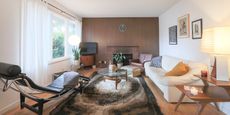 Vacationing With These 6 Airbnb Alternatives Is Like "Entering an Interiors Magazine" — We're in for the Trip
Vacationing With These 6 Airbnb Alternatives Is Like "Entering an Interiors Magazine" — We're in for the TripIf your usual short-term rental platform isn't satisfying your design urges, these other options will have you immersed in awe-inspiring décor
By Gilda Bruno Published